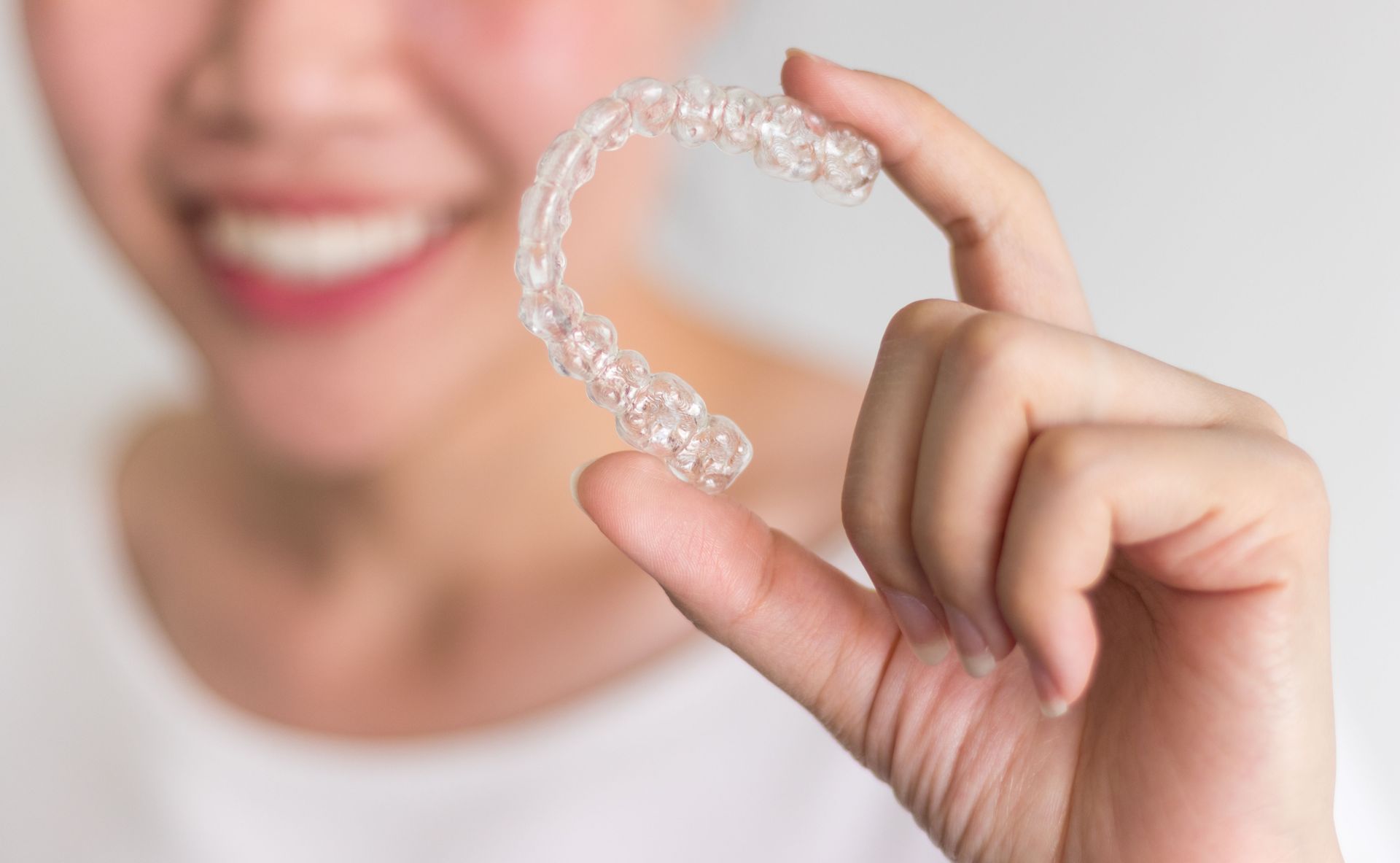Your Guide to Clear Braces
February 10, 2021

When you think of wearing braces, you probably have an image in your mind of an awkward teenager with a mouth full of metal. While that was the standard for braces for decades, recent innovations in orthodontics have created many more options for the 4 million people who wear braces in the United States.
Clear braces are one of those options. But what exactly are they and how do they differ from Invisalign or traditional metal braces? Let's take a look at the answers to those questions and many others so that you have all the information about clear braces that you could ever need.
What Are Clear Braces?
Despite their name, clear braces differ quite significantly from Invisalign and other teeth straightening systems that use clear aligners. Clear braces are more like traditional metal braces except they have clear brackets. They sometimes have clear wires as well, making them practically invisible. The clear brackets are typically made out of a ceramic or plastic material.
How Do Clear Braces Work?
Not only do clear braces
resemble traditional metal braces in their design, but they also function like those braces. When you visit an orthodontist to get clear ceramic braces, they will attach a bracket to each tooth and connect them with wires. Many clear braces systems use a metal wire to connect the brackets but you may have the choice of a white archwire. In combination with your clear brackets, this will make your braces far less obvious, especially from a distance.
As with conventional braces, this system is very effective in treating various types of tooth misalignment. During your regular orthodontic appointments, your orthodontist will manipulate your teeth in various directions in order to pull them into the proper alignment. On average, treatment with clear braces takes 18 to 24 months. However, treatment may be faster with some brands because of the technology they use.
When you first get clear braces put on, you may feel a bit of discomfort, especially when your orthodontist makes adjustments to them. You may also develop mouth sores as your cheeks and gums adjust to your new braces, but you can use orthodontic wax to prevent abrasion. Most people who wear braces get used to them fairly quickly and don't experience ongoing discomfort.
Clear Braces vs. Invisalign
Although both clear braces and Invisalign aligners can effectively straighten misaligned teeth in an inconspicuous way, they differ in many other aspects. As previously mentioned, the design of clear braces involves brackets and wires, just like conventional braces. Invisalign, and other types of invisible braces, straighten teeth with transparent, plastic aligner trays.
These aligner trays are removable, allowing wearers to take them out when they eat and for cleanings. Clear braces are fixed to your teeth and only an orthodontist can remove them. While the ability to remove invisible aligners may make them seem like the obvious option, they're not right for everyone. Aligner trays are usually right for people with mild to moderate cases of misalignment. If you have more severe tooth misalignment or malocclusion, you will likely need a bracket and wire system.
To find out if you are a candidate for Invisalign or if you require clear brackets and wires, it's best to consult your orthodontist. They'll be able to tell you what the best option is to get the straight teeth you've always dreamed of.
How to Care for Clear Braces
If you choose clear fixed braces, you'll need to take certain precautions in order to take care of them and your teeth. Your orthodontist will likely show you how to properly clean your braces and teeth but be sure to ask them any questions that you have about braces care. While wearing braces, you will probably need to dedicate extra time every day to brushing, as braces have a lot of nooks and crannies in which food can get stuck. This can lead to a build-up of bacteria so it's important that you clean out lingering food particles.
Whenever possible, you should clean your teeth and braces right after eating to prevent a build-up of bacteria. If you can't clean your teeth right after a meal, rinse your mouth well with water. This can help get the residue off of your teeth and dislodge food particles. You can also use a floss threader or interdental cleaner to floss below the archwire.
Another part of caring for braces is knowing what foods you should avoid. Your orthodontist will tell you exactly what foods you should avoid but in general, the list includes hard foods like nuts, chewy foods like candies, crunchy foods like apples and chips, and acidic foods like pickles. All of these foods can cause damage to your wires and brackets that only your orthodontist can fix.
If you're ready to start a braces treatment that is much less noticeable than conventional braces, ask your orthodontist about clear braces. Call Becker Orthodontics today to learn more about your options.











Share On: